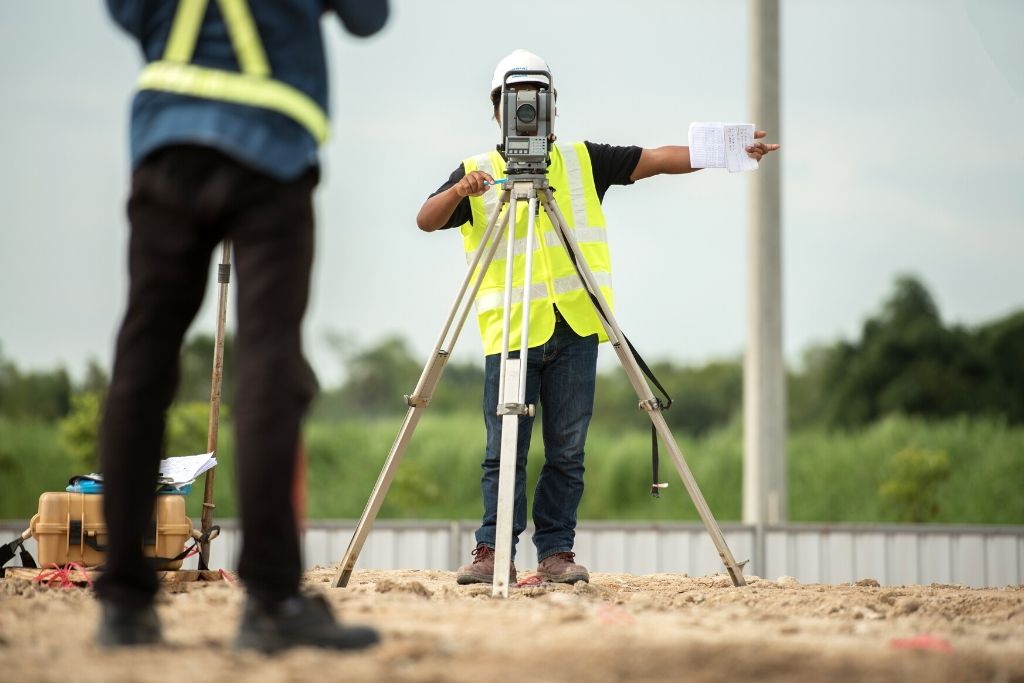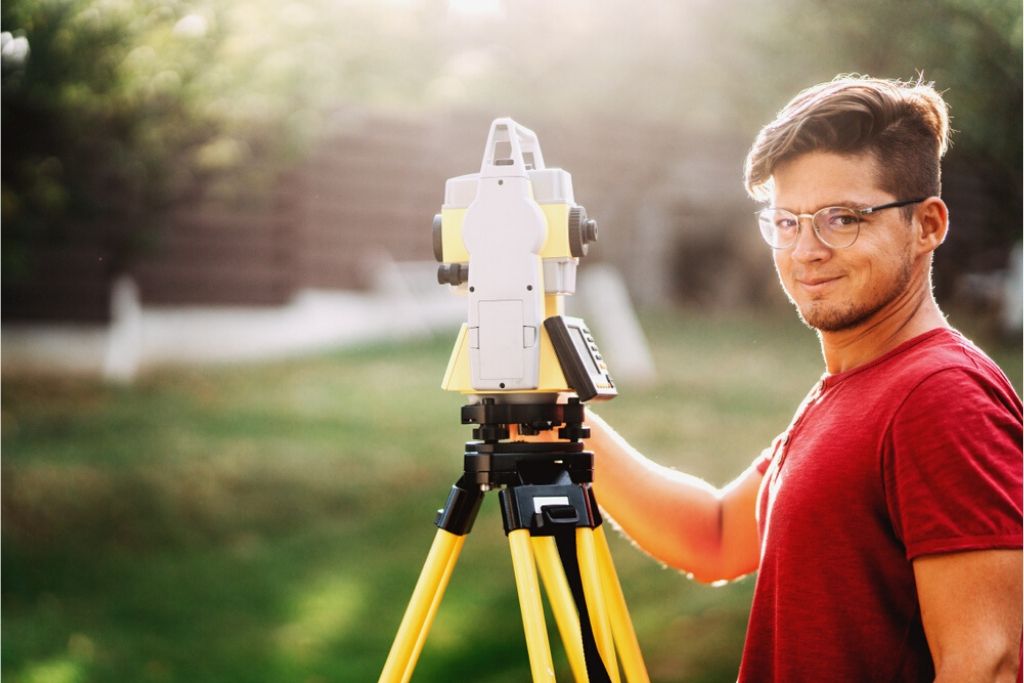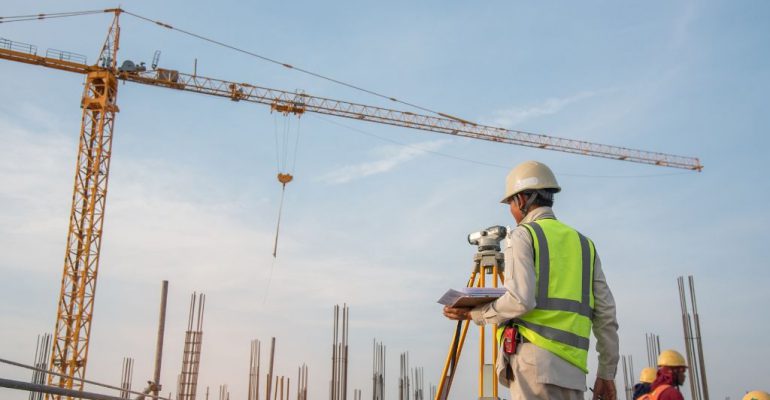Around the house, you might need to use a ruler or measuring tape for your mini “construction surveyor jobs,” but what if you needed to lay out these sorts of plans for an amusement park rather than just new tiles for your bathroom?
It is in cases like these that human society has turned to surveyors since Ancient Egyptian times.
Land Surveyors are responsible for taking big measurements and dividing up pieces of land. Just about every civil engineering project starts with a survey to determine legal boundaries between parcels of property, the location of existing infrastructure, and the lay of the land.
This article will answer the questions:
- Why Do We Need Surveys?
- What Skills Does a Construction Surveyor Need?
- What Are the Duties of Surveyors?
- How Much Do Construction Surveyors Make?
Keep reading to get a better understanding of the different elements of a career in surveying management.
Why Do We Need Surveys?
Surveyors put the three-dimensional world onto a two-dimensional plane.
Land surveyors have helped civil engineers and property owners divide up their land for thousands of years. This career offers an indispensable service both to buyers and sellers of property—whether these parties involve governments or private parties.
Imagine trying to build a city. The first thing you would have to do is know where everything is and have that in front of you in map form. Surveyors turn physical realities like the geographic shape of India into a two-dimensional map a group can actually use.
Cities and construction projects require the help of construction and land surveyors. Not only are territorial laws and regulations immensely complicated and potentially central to a job, but maps are the first step in actually building anything. A construction surveyor will help you find the correct size, shape, and location of each parcel of land.
What Skills Does a Construction Surveyor Job Call For?

The surveyor works outdoors doing field research for half of his/her career and the other half of his/her career indoors preparing legal documents. Like many other technical professions, construction surveyor jobs rely on a toolbox.
The most important item in this toolbox is traditionally called a theodolite. Today we call them total stations.
It’s that tripod camera we’ve all seen by the side of the road. The total station functions as a laser protractor. It measures the angles and distances between two points. Surveyors can then use trigonometry and geometry to triangulate exactly where things are and how large they are.
If trigonometry does not sound like something you want to spend your professional life doing, don’t worry. Modern total stations actually do a lot of this trigonometry for you.
Modern surveyors use more than just a compass and math to measure and divide land. This is some of the high-tech equipment in the land surveyor’s toolbox:
- Drones
- GPS
- Robotics accessories
There are also traditional tools like:
- Level
- Compass
- Umbrella
Land surveyors are mathematical thinkers who enjoy precision, measuring things, being outdoors, and working with technical tools.
The Surveying Management curriculum at Everglades University will prepare you for building cities in the real world.
What Are the Duties of a Surveyor?
Surveyors measure, communicate, and divide land.
Surveyors work on most large construction projects. An education at Everglades University can prepare you for building roads, dams, plumbing, and buildings.
Construction surveyors are just one type of surveyor. These following job descriptions might sound similar to the untrained eye, but each job requires specific tools and different amounts of time and energy.
These are four types of surveyor jobs:
Construction Survey
This is a form of land survey that locates structures within a property; construction surveyor jobs are about measuring and mapping walls, buildings, roads, and utilities within a given space so that construction personnel know how to deal with them, and whether or not they present a risk.
ALTA Survey
This is the most complete form of land survey. It covers all of the topographical and legal features of a property. The purpose of this kind of survey is to provide a title company and/or a bank with enough information that they can issue a form of insurance policy called the ALTA.
Boundary Survey
This is a form of land survey that covers both legal and field research. The purpose of this kind of survey is to provide landowners or land sellers with the parameters they need to build upon a parcel of land legally.
Site Planning Survey
This is a form of land survey that explores the topography of a site before permits are emitted. It is a very common type of survey. It is the first step in many development projects that involve highways, industrial sites, playgrounds, and even residential properties. It was probably the necessary first step in many of the construction projects you see in your day-to-day.
Conclusion

Surveyors are a key part of construction projects. They are so in-demand that they are required for safety and legal reasons in many cases. It is an ancient field that is growing at an 11% annual rate and will remain valuable as long as roads are being built.
If a career as an authority figure and a day-to-day embracing math, the outdoors, and research sound like exactly what you’re seeking, then register today at Everglades University.




